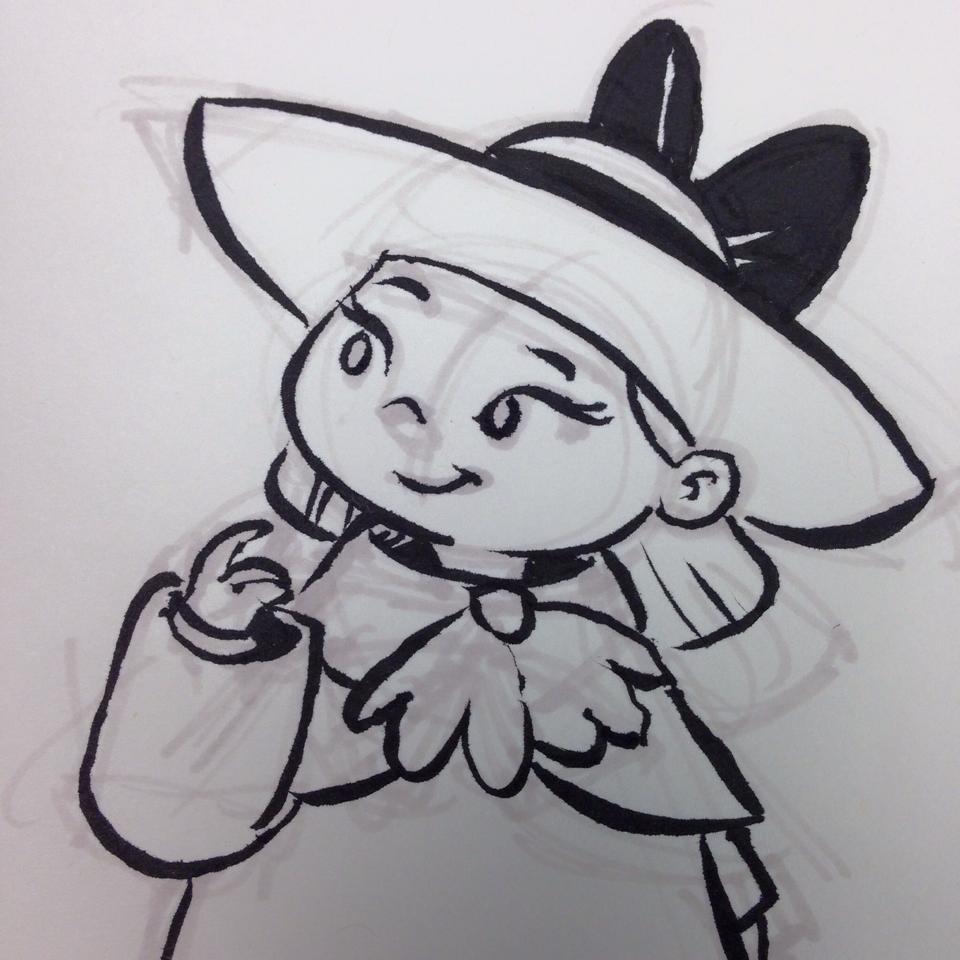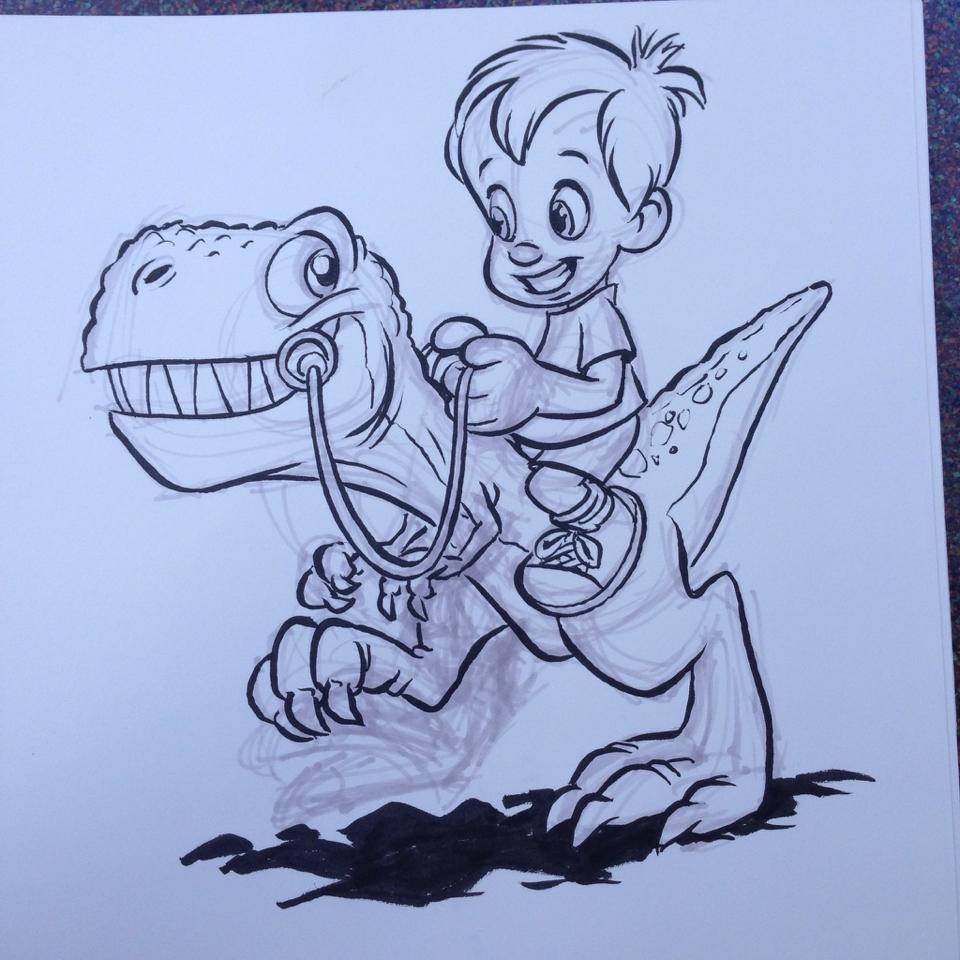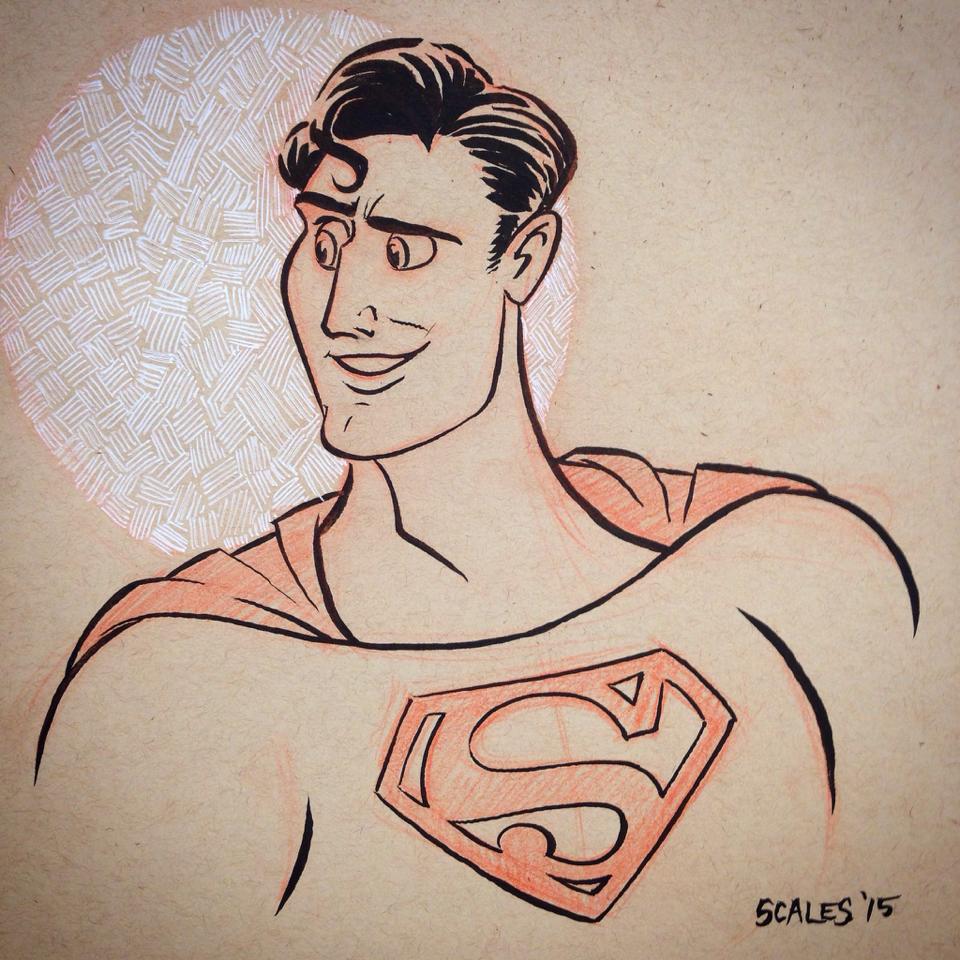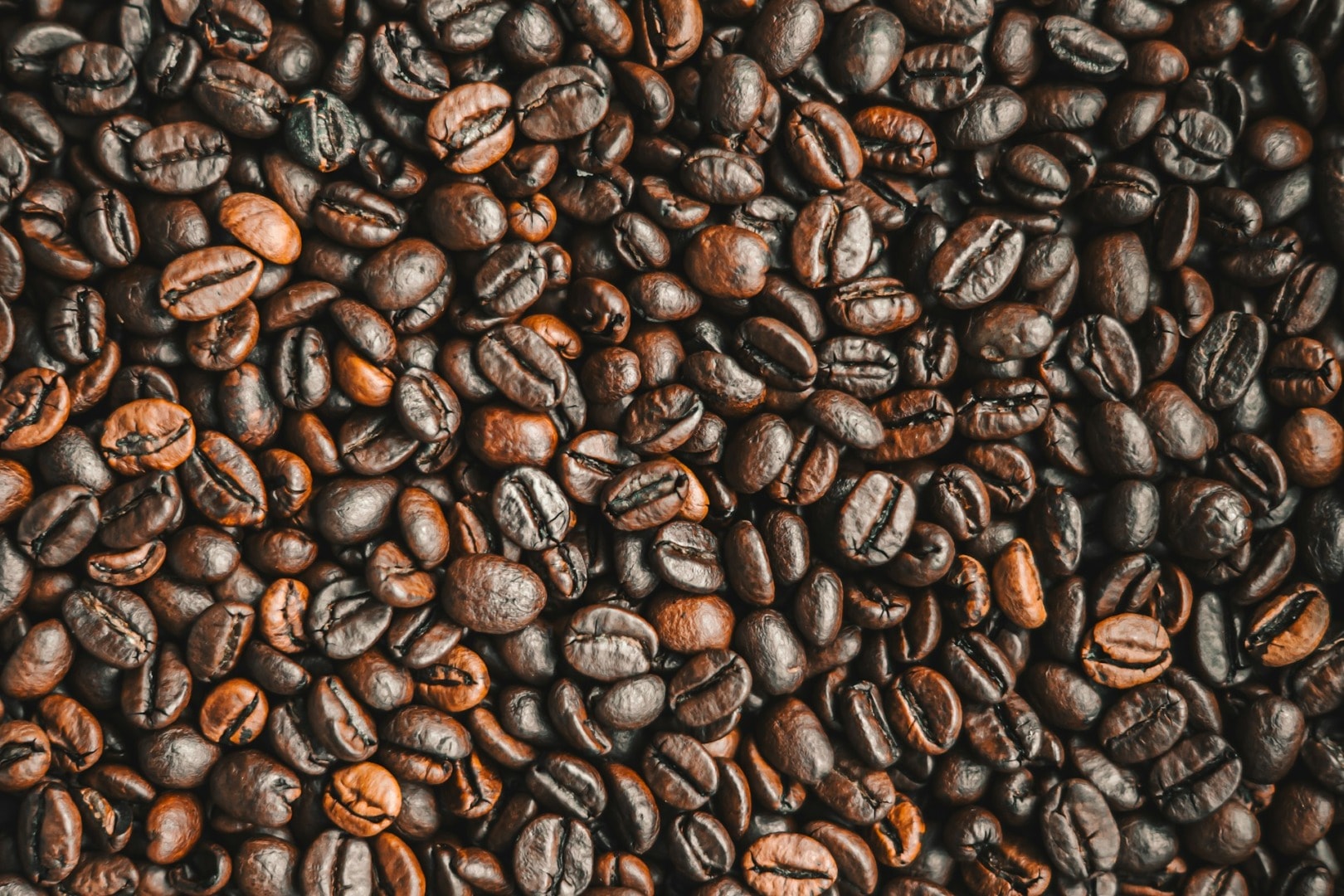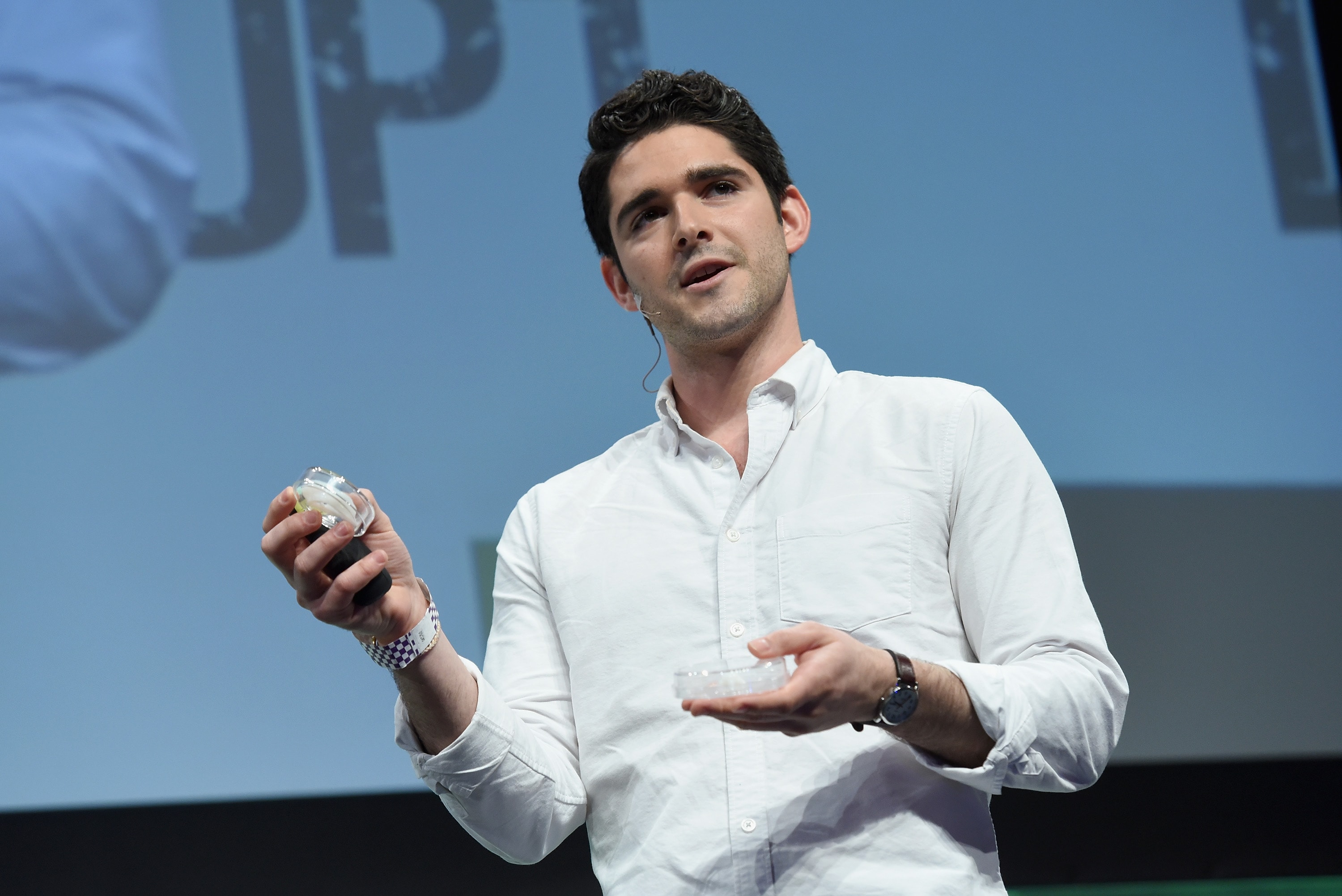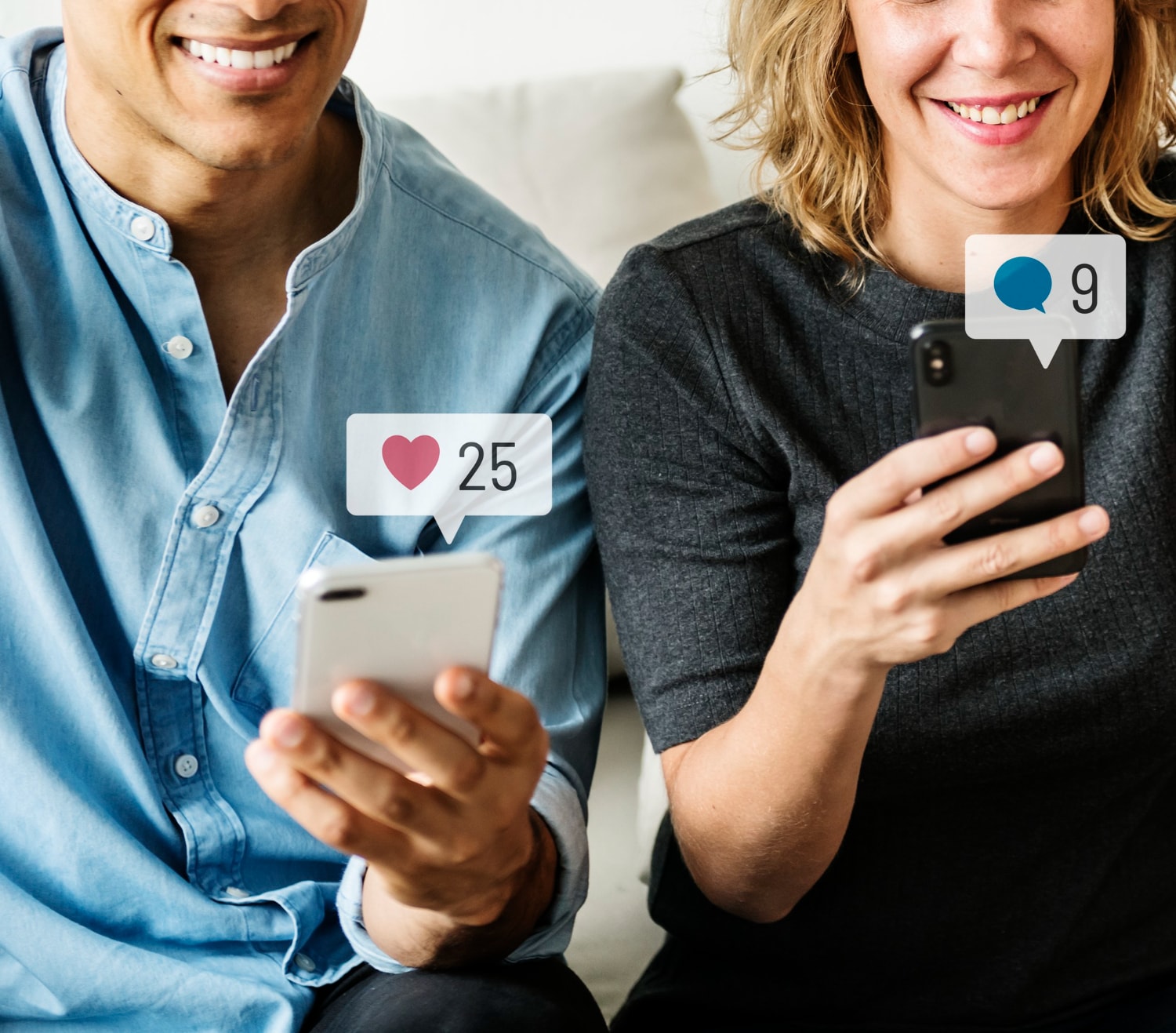As a young child, you are always asked, ‘what do you want to be when you grow up?’ You would usually spout off something you had heard before: teacher, mail carrier, firefighter, veterinarian. Sometimes, you let your imagination guide you to something adventurous and highly imaginative such as a space-cowboy that rides into outer space to save the world. One lucky Disneyland artist, Eric Scales, lives out your childhood dream everyday drawing and painting new imaginative characters as well as some of your favorite classics. We had the opportunity to learn more about Eric’s art, his inspiration, and the creative journey he begins when he starts a new piece. Below are highlights of our conversation.
Tell me a bit about yourself – How did your life in art begin?
I grew up trying to draw the cartoons I liked. I think the first time I ever saw something and tried to draw it, rather than just aimlessly drawing as I had before, I was probably around 7 years old and it was a picture of Pee Wee Herman. My family had rented “The Pee Wee Herman Show” on VHS, and for some reason I thought I’d try and draw Pee Wee the way he was on the cover. I think I used a Sharpie and lined paper. And I remember also seeing a “How to draw Chip n’ Dale” insert in our Disney Channel magazine and teaching myself how to do that. After that, it was how I spent my time, drawing the cartoons that I liked, and eventually making up my own characters.
What is your favorite personal piece(s) of art? What does it mean to you?
Mmmm, that’s hard to choose. I feel like I should pick something I did for myself that’s painted, rather than just a sketch or something. But I’m afraid I have to pick something I did for Disneyland a few years ago. I painted some parodies of the stretching portraits that are in the Haunted Mansion. In the Mansion, each long portrait shows the subject in the upper 3rd of the painting, and as the room stretches and more of the image is revealed you see something macabre about the person, either how they died or in one case, that they murdered their husband. Disney had already produced a few pins with the Disney characters parodying these portraits, but it had never been done as a full painting. I tweaked the pin artwork quite a bit, to get the poses to match the original paintings a bit more, and I really tried to match the look of the real paintings also. Disneyland delayed their release by a year and I had to wait all that time to show them to people. When they finally came out I was so excited. I’m really proud of them.
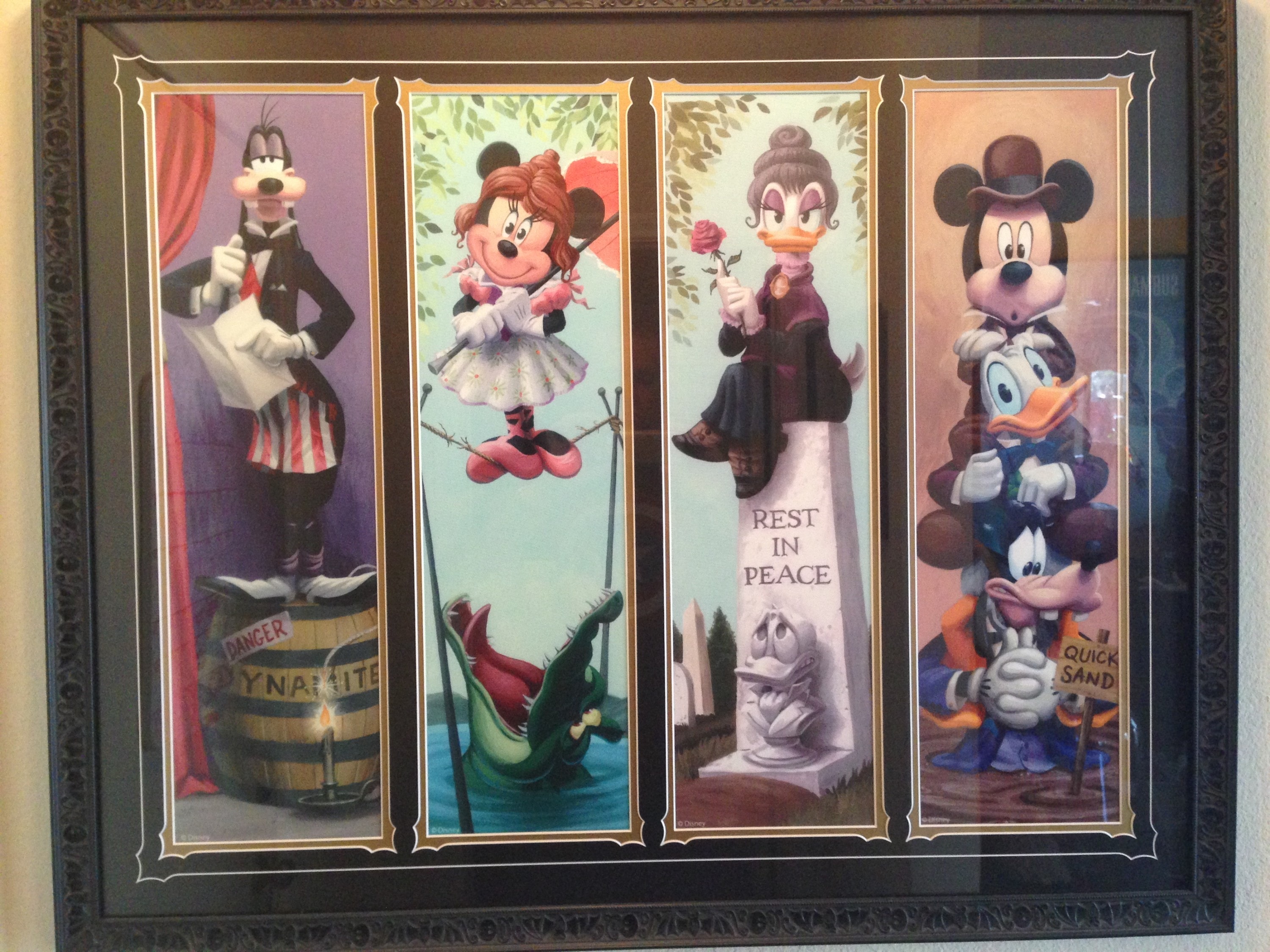
Can you describe your working process from idea to finished product?
Sure. If I’m painting something traditionally for a client I do most of my sketching digitally. I use a Yiynova MSP19U Tablet Monitor, and draw my sketches in Photoshop. I try to use a lot of layers, even in the rough stage, so that if I get a character pose I like I have the freedom to move it around. Once I get a sketch that I’m happy with I’ll print that out and transfer it with carbon paper onto illustration board. I wish I could say that I spend a lot of time doing color thumbnails and stuff, but I usually don’t. If I’m unsure about what colors I plan to use sometimes I’ll digitally color something first to see what works and what doesn’t. Then I just dive right into the painting. I paint in gouache, which is sometimes called opaque watercolor. Then I’ll scan it and send it off to the client, where they do whatever they’re going to do with it.
What are some key ideas for those determined to become an established artist?
It really is all about the work you put into it. The people that make it are the people who work really hard at it for a long time. You can have talent and be “a natural” but if you just wait for someone to offer you your dream job, you’ll be waiting a long time. Part of that work is being sure to get your work out there – put it online in as many ways as you can. Be sure that people are familiar with your work and know your name. Nowadays you can do all of your own advertising and it’s cheap and relatively easy. Keep a blog, Instagram, website… This might seem like a no-brainer to show potential clients who ask to see your work but the great thing is even when you aren’t actively looking, your website/blog/etc… is out there and people are looking at it…all the time! If your work is good it will get passed around. That really is the best piece of advice I think I can give anyone, no matter what kind of visual art you do.
Can you tell me 3 artists that inspire you and why?
Well the first one is easy. I went to school with Brian Kesinger, who’s a story artist at Disney right now. He’s also the creator of Victoria & Otto, a Steampunk Victorian girl and her pet octopus. He was hired at Disney right out of high school. I remember noticing that he didn’t seem intimidated by the challenge of this huge art job fresh out of school, he just seemed hungry and eager for the challenge. Every time I saw him he’d show me things he was working on and I’d think “How do you do that? You didn’t know how to do that before.” He was super eager to learn and to try things. Even today, moving up and up through Disney to different departments and trying new things, he’s always designing t-shirts, and he’s drawing Groot for Marvel Comics now, it’s amazing. He’s really got a great attitude. Some artists get in their groove and just do what they always do, and some make a great living doing it, but some, like Brian, keep trying new stuff and adding to their repetoire. That’s really inspiring.
Related Articles: JOSEPH MARTINEZ – ARTIST SPOTLIGHT by ORION GONZALEZ
WHITNEY POLLETT – ARTIST SPOTLIGHT by ORION GONZALEZ
The second is probably Brittney Lee. She’s a visual development artist at Disney. I first discovered her blog, and her beautiful paper sculptures. Her designs regardless of the execution are amazing. She does digital work too and they are no less stunning, but in three dimensions with paper it’s even better.
For the third, I’ll say animator Glen Keane. He was the first animator whose name I learned and whose style I started to recognize when I’d watch a Disney movie he had worked on. It’s been a long-time admiration and there are so many great animators out there but you never forget the first animator you learn about.
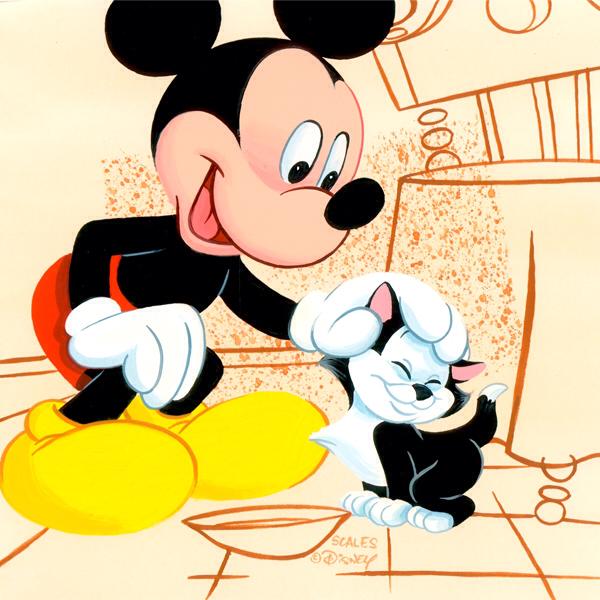
What does the future hold for you; what is next?
I’d love to do more character designs for animation. I’ve only dipped my toe in that water, doing a few character design and visual development pieces for some shows that were never produced, but I’d love to do more. Right now I’m gainfully employed at Disneyland and hopefully that will continue but as an artist you always have to prepare for the next thing, and I really love to create characters.
How do you think your art impacts others?
I hope they get warm feelings for it. I think I’m always going for that tactile, comforting feeling when I draw and paint. I draw a lot of dragons and animals and I put a lot of crevices and scales and fur on them, things that suggest what the character feels like. I like that kinda stuff. I used to watch Sesame Street and the Muppet Show growing up and I remember that feeling of wanting to touch and play with the Muppets. They were different than my stuffed animals, but I didn’t quite know how, and I just had that desire to squeeze them and feel what they were made of and how they worked. I think I try to get that richness of texture into my work. And humor. I like to draw funny things.
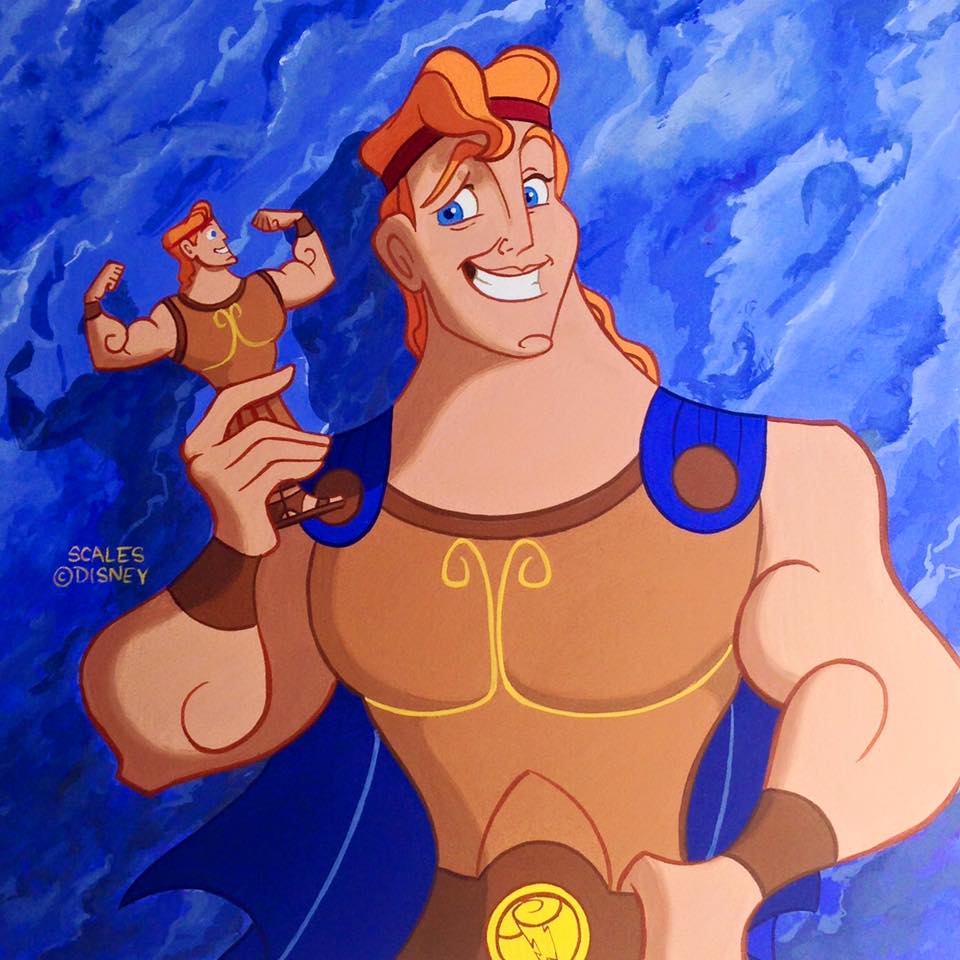
How did you develop your style? Has is changed much over the years?
I see all the individual influences so to me it doesn’t seem developed yet. It’s like being a baker and someone saying “How did you bake this cake?” and to me, I think “No, it’s not cake, it’s eggs and flour and milk” – all I can see is all the stuff that went into it. But that’s cake.
So there’s a heavy influence of the classic Disney cartoons, the really rounded Freddy Moore look. That’s mostly what I drew growing up. It’s only recently that I’ve started appreciating more stylized cartoons, the mid century stuff, but I’ve slowly adapted some of that. When I paint it’s mostly the more classic look, but when I sketch and doodle I try to not repeat the same things I always doodle, so going a bit more stylized is a fun challenge.
What do you see in the future of character design? Do you think technology will impact it in the next few years?
I’m glad we are moving away from the more photorealistic look of CGI characters to characters that are more traditionally “cartoony,” if for no other reason than to have some variety. I think the computer is going to get better and better at rendering characters in a variety of ways and that will lead to more freedom for the artist to design exactly what he wants, rather than having to keep in mind what the computer is capable of.
I’ve noticed that much of your art is traditional pen and pencil, what are your feelings on the prevalence of digital painting?
As an artist I’m just more skilled doing things traditionally. But as a viewer I love digital painting. Some digital painting really messes with my mind a bit and I can’t always tell right away how an effect was achieved. That engagement makes me enjoy it a lot more.
I usually notice art for one of two reasons. One, is when it’s something along the lines of what I do, and really well done, let’s say a character sketch. I think “Wow that’s great and next time I draw that kind of character I’d like to see if I can do that kind of fur” or eyes, or whatever it is that really sells that design. Essentially, I understand most of the art, but it’s got a little something extra that is intriguing. The other reason I really notice art is that it’s so far beyond anything I feel like I’m capable of but I feel like I could get there with years of practice. Most detailed digital painting is like that for me. I know the basics, and can do a nice cartoony rendering digitally, but the more complicated stuff is far beyond my skills right now. On the bright side, I get a lot of freelance work because people really appreciate that my stuff is traditionally done, and they don’t want the digital look.
Photo Credit: All photo credit to Eric Scales.



